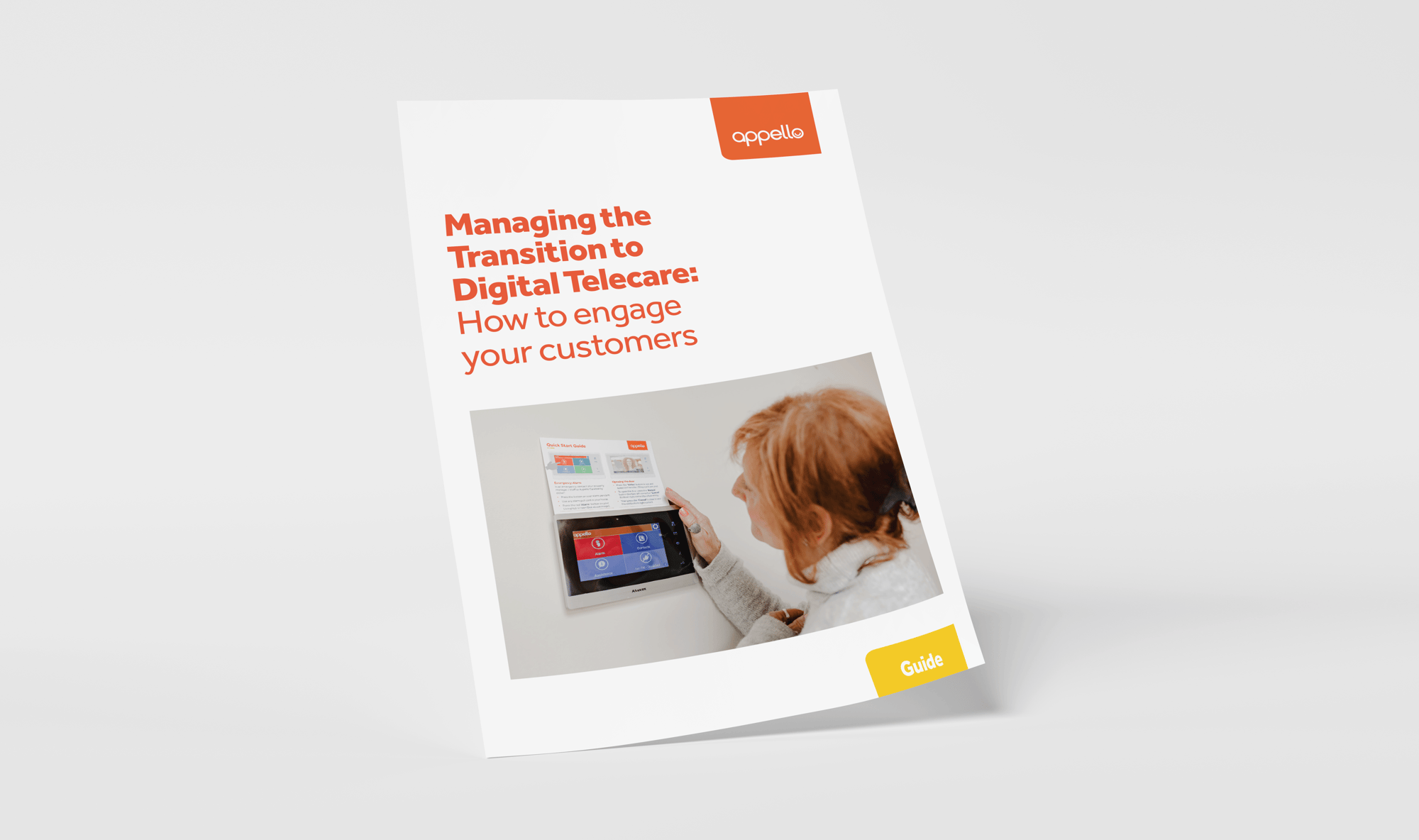Guide:
How to engage your customers with digital telecare
Digital telecare is revolutionising support services, providing more reliable, inclusive, and accessible solutions. Involving your customers early in the transition ensures their needs are met and guarantees a smoother rollout of the technology.

Why you must read...
Involvement
Engage your customers early in the planning phase to ensure the new digital telecare services meet their needs. Actively involve them from the outset to identify requirements, understand their concerns, and ensure that the system will support their lifestyle and preferences.
Support
Offer ongoing support to your customers during the installation and post-launch phases. Provide hands-on training, clear FAQs, and reassurance, ensuring that they feel confident in using the new systems. Consider designating digital champions to assist with this transition.
Communication
Clear and consistent communication is crucial throughout the process. Use accessible language and various formats to address potential barriers, explain the technology, and highlight the benefits. This helps foster trust and encourages acceptance of the changes.
What to expect...
As you transition to digital telecare, expect a process that prioritises customer involvement from the beginning. Engaging your customers early during the planning phase ensures their needs are met, while ongoing support, including hands-on training and clear communication, will help them embrace the new systems.
Throughout the transition, expect open dialogue to address any concerns and demonstrate the benefits of digital telecare, ensuring a smooth implementation and stronger customer buy-in. This process will enhance safety, control, and connection for your residents while supporting their independence and wellbeing.
“It is a known risk that some analogue telecare devices may not be digitally compatible or perform as reliably on digital networks.”
Stephen Kinnock
Minister of State for Care
Department of Health and Social Care
